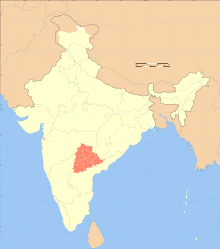Telangana Praja Samithi or Telangana Peoples Convention was an Indian political party which fought for statehood for the Telangana region.
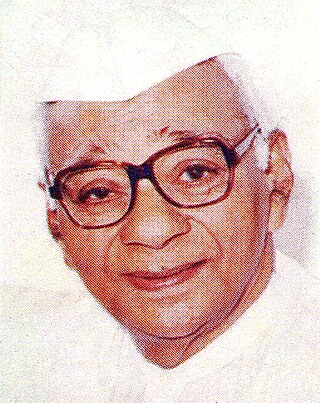
Kasu Brahmananda Reddy was the Chief Minister of Andhra Pradesh, India, from 29 February 1964 to 30 September 1971. On 3 June 1977, he was elected president of the Indian National Congress.
The Politics of Andhra Pradesh take place in the context of a bicameral parliamentary system within the Constitutional framework of India. The main parties in the state are the Telugu Desam Party (TDP), Janasena Party (JSP), and YSR Congress Party (YSRCP). Other parties that have small presence in the state include the Bharatiya Janata Party (BJP), Indian National Congress (INC), and Left parties, including both Communist Party of India (Marxist) and Communist Party of India (CPI).
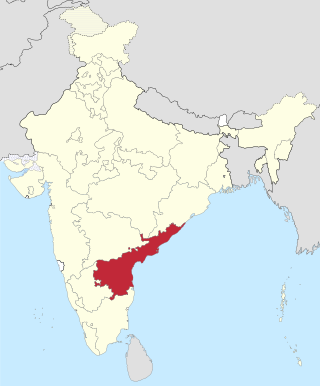
Andhra State was a state in India created in 1953 from the Telugu-speaking northern districts of Madras State. The state was made up of this two distinct cultural regions – Rayalaseema and Coastal Andhra. Andhra State did not include all Telugu-speaking areas, as it excluded some in Hyderabad State. Under the State Reorganisation Act of 1956, Andhra State was merged with the Telugu-speaking regions of Hyderabad State to form Andhra Pradesh.

Sardar Gouthu Latchanna was an Indian politician, statesman and freedom fighter from India.

Marri Chenna Reddy was an Indian politician active in several states. He was the 6th Chief Minister of Andhra Pradesh from 1978 to 1980 and from 1989 to 1990. He also served as the governor of Uttar Pradesh (1974–1977), governor of Punjab (1982–1983), governor of Rajasthan from February 1992 to May 1993, and governor of Tamil Nadu from 1993 until his death. He was a leader of Indian National Congress Party.

Boianapalli Vinod Kumar is an Indian politician and former Member of Parliament, he served as Vice-chairman of Telangana State Planning Board (2019-2023). He represented the Karimnagar constituency of Telangana State in the 16th Lok Sabha (2014-2019) and Hanamkonda constituency in the 14th Lok Sabha (2004-2009). He is one of the founding members of the Telangana Rashtra Samithi (TRS) party and is presently a politburo member and served as party's deputy Floor Leader in the 16th Lok Sabha.

The Gentlemen's agreement of Andhra Pradesh was signed between Telangana and Andhra leaders before the formation of the state of Andhra Pradesh of India on 20 February 1956. The agreement provided safeguards with the purpose of preventing discrimination against Telangana by the government of Andhra Pradesh. The violations of this agreement are cited as one of the reasons for formation of separate statehood for Telangana.
The States Reorganisation Commission of India (SRC) constituted by the Central Government of India in December 1953 to recommend the reorganization of state boundaries. In September 1955, after two years of study, the Commission, comprising Justice Fazal Ali, K. M. Panikkar and H. N. Kunzru, submitted its report. The commission's recommendations were accepted with some modifications and implemented in the States Reorganisation Act in November, 1956. The act provided that India's state boundaries should be reorganized to form 14 states and 6 centrally administered territories. On 10 December 1948, the report of Dar Commission was published but the issue remained unsolved.
Dr. Mallikarjun Goud was a Union Minister, President of Andhra Pradesh Congress Committee, and six-term member of the Parliament of India. He was the member of 5th Lok Sabha, 6th Lok Sabha, 7th Lok Sabha, 9th Lok Sabha, 10th Lok Sabha, and 11th Lok Sabha of India.

The Visalandhra,VishalandhraorVishala Andhra was a movement in post-independence India for a united state for all Telugu speakers, a Greater Andhra. This movement was led by the Communist Party of India under the banner of Andhra Mahasabha with a demand to merge all the Telugu-speaking areas into one state.. The movement succeeded and a separate state of Andhra Pradesh was formed by merging Telugu-speaking areas of Hyderabad State with Andhra State on 1 November 1956 as part of the States Reorganisation Act.. However, on 2 June 2014, Telangana State was separated back out of Andhra Pradesh and the Vishalandhra experiment came to an end. The residual Andhra Pradesh now has approximately the same borders as the old Andhra State of 1956.
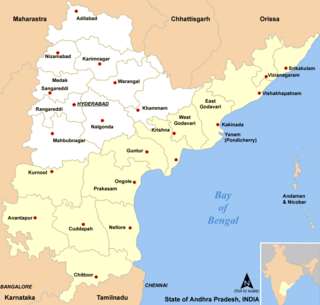
The Telangana movement refers to a movement for the creation of a separate state, Telangana, from the pre-existing state of Andhra Pradesh in India. The new state corresponds to the Telugu-speaking portions of the erstwhile princely state of Hyderabad, which were merged with Andhra Pradesh in 1956, leading to the Mulki Agitations.

Samaikya Andhra Movement was a movement organized to keep the Indian state of Andhra Pradesh united, and to prevent the division of the state - separating the Telangana districts of the state into a separate Telangana state. The movement was supported by government employees, advocates in Coastal Andhra & Rayalaseema regions along with students from 14 universities, various occupational, caste & religious groups of Coastal Andhra & Rayalaseema regions. The last set of protests were triggered after the Congress Working Committee decision to divide the state came to an end after President of India gave nod to Telangana Bill which would make the latter to come into existence from 2 June 2014.

The early 2011 Telangana protests refers to a chain of events that took place during the early months of 2011, after the Srikrishna committee report was submitted to government of India. These protests are part of Telangana movement. The Telangana political JAC declared the launch of a non-cooperation movement throughout Telangana, including the state capital at Hyderabad, starting on 17 February. The plan was to request government employees not to work; people not to pay taxes or utility bills; people not to buy tickets while using public transport; to organise rallies; to block traffic on highways; and other measures. It is reported that Congress party's central leadership told Telangana MPs that it will take a decision on Telangana after assembly elections in several states in May. On 24 February, Telangana political JAC organised Egypt-like mass protests in Hyderabad beginning 10 March. Projections for number of people to be mobilised varied from one to five million. Protesters raised slogans of 'Jai Telangana', sang pro-Telangana songs, and played games. Protesters included activists of various political parties, students, government employees, lawyers, doctors, teachers, journalists, writers and cultural artists. 48 people were arrested for the vandalism of the statues. A Telangana leader said the incident show the hatred towards leaders of Andhra and he fears more such incidents if the central government further delays the process to carve out separate Telangana state. Osmania University students warned non-Telangana staff of the university to not pass on the identities of agitators to the police and warned them they could become targets if they did not join the agitation.

The Pre-2004 Telangana protests refers to the movements and agitations related to the Telangana movement that took place before the year 2004. Andhra state and Telangana was merged to form Andhra Pradesh state on 1 November 1956 after providing safeguards to Telangana in the form of Gentlemen's agreement. Soon after the formation of Andhra Pradesh, people of Telangana expressed dissatisfaction over how the agreements and guarantees were implemented. Protests initially led by students later under the leadership of newly formed political party Telangana Praja Samithi, led by M. Chenna Reddy and Konda Lakshman Bapuji, a minister who resigned from the cabinet led by then Chief Minister Kasu Brahmananda Reddy, demanding the formation of a separate state of Telangana. More than three hundred people died in police firing. Under the Mulki rules in force at the time, anyone who had lived in Hyderabad for 15 years was considered a local, and was thus eligible for certain government posts. When the Supreme Court upheld the Mulki rules at the end of 1972, the Jai Andhra movement, with the aim of re-forming a separate state of Andhra, was started in Coastal Andhra and Rayalaseema regions.

The history of the Telangana movement refers to the political and social conditions under which the Telangana region was merged with Andhra State to form the state of Andhra Pradesh and the subsequent demands to reverse the merger to form a new state of Telangana from united Andhra Pradesh.

The Telangana protests 2004-2010 refers to the movements and agitations related to the Telangana movement that took place between the years 2004 and 2010. For the 2004 Assembly and Parliament elections, the Congress party and the TRS had an electoral alliance in the Telangana region to consider the demand of separate Telangana State. However, again in 2006, the then Chief Minister Y. S. Rajasekhara Reddy categorically said that the state would remain united. This again resulted in statewide protests. In 2009, Union Minister of Home Affairs P. Chidambaram announced that the Indian government would start the process of forming a separate Telangana state, pending the introduction and passage of a separation resolution in the Andhra Pradesh assembly after an 11-day fast by K. Chandrashekar Rao. This again resulted in protests across both Andhra and Rayalseema as in a short time of the Home Minister's declaration, MLAs from the Coastal Andhra and Rayalaseema regions submitted their resignations in protest.
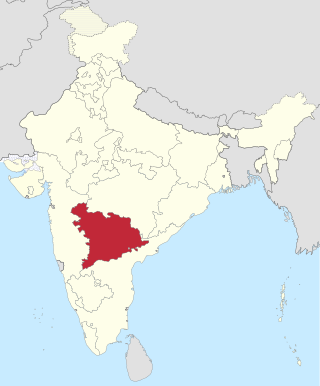
Hyderabad State was a state in Dominion and later Republic of India, formed after the accession of the State of Hyderabad into the Union on 17 September 1948. It existed from 1948 to 1956. Hyderabad State comprised present day Telangana, Marathwada and Hyderabad-Karnataka
Jai Andhra movement is a 1972 political movement in support for the creation of Andhra state in the light of injustices felt by the people of the Coastal Andhra and Rayalaseema Regions. This was after the Andhra Pradesh High Court and Supreme Court of India upheld the Mulki rules in existence at the time. This disenfranchised a vast majority of the population of the state from obtaining jobs in their own state capital. In ensuing protests and police firing eight people were killed. Prominent leaders from Andhra Pradesh: Tenneti Viswanadham, Raja Sagi Suryanarayana Raju, Gouthu Latchanna, Jupudi Yegnanarayana, N. Srinivasulu Reddy, B. V. Subba Reddy, Kakani Venkataratnam, Vasantha Nageswara Rao, M. Venkaiah Naidu, Nissankararao Ventakaratnam, Chowdary Satyanarayana, prominent student leaders like K.Sreedhar Rao, and Haribabu from Andhra University, M.S. Raju from Andhra Medical College, and many others participated in the agitation. It was a sequel to the 1969 Telangana movement. Over 400 people sacrificed their lives for the movement. One of the main opinions expressed was "Development is seen only in and around Hyderabad and it is time the coastal districts also develop rapidly".
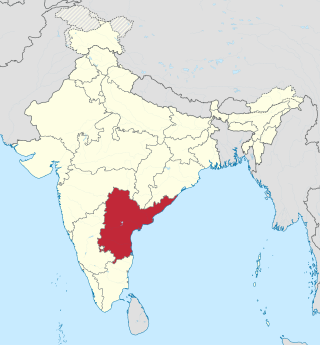
Andhra Pradesh, retrospectively referred to as United Andhra Pradesh, and Undivided Andhra Pradesh, was a state in India formed by States Reorganisation Act, 1956 with Hyderabad as its capital and was reorganised by Andhra Pradesh Reorganisation Act, 2014. The state was made up of three distinct cultural regions of Telangana, Rayalaseema, and Coastal Andhra. Before the 1956 reorganisation, Telangana had been part of Hyderabad State, whereas Rayalaseema and Coastal Andhra had been part of Andhra State, formerly a part of Madras Presidency ruled by British India.
